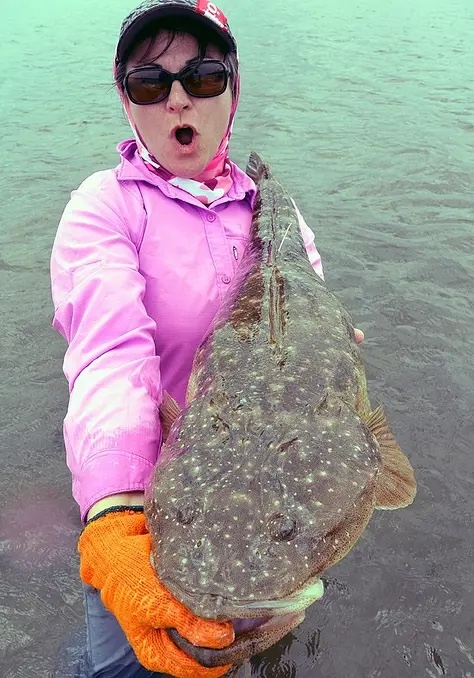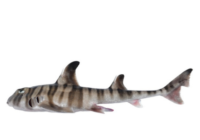Whilst fishing for bass on Bjelke-Petersen Dam in Queensland some years ago, I experienced a force of nature that I will never forget. Let me set the scene for you:
My eyes and attention were trained on the belly of my line as I worked my tail-spinner through the water column — hopping it down the contour of a point towards our boat. The sound of the approaching commotion took some time to break through my deep focus, but eventually, I became aware of the unmistakable sound of water slapping a hull at super high speed. “Wow! That boat’s got some clip,” I thought. But something wasn’t quite right… while the water beat against the hull in rapid-fire thuds like a machine gun, the vessel didn’t seem to be making the ground it should.
Perplexed, I turned to find answers to the conflicting information my ears were reporting to my brain. What I saw was the most incredible display of collaboration I’ve ever had the privilege of witnessing.

About as welcome as a seal on the open water, cormorants have become a harbinger of bad fishing luck for Aussie anglers.
An immense flock of waterbirds — mixed species including several varieties of cormorant and a fair whack of massive pelicans — were wheeling in a dense circle just above the lake’s surface. The wings of the lowest birds were whipping the water into a froth, and it was that sound I’d mistaken for a boat. I estimate the size of the patch to be around 30m in diameter. The birds cooperated in their hunting strategy, spiralling in height as they circled, their outer ring moving swiftly toward the centre to herd their quarry. In the circle’s heart was a bait school, growing denser and more panicked with every pass.
As each bird reached the inner ring, it’d nab a fish, alight to higher airspace, and rejoin the hunt from the outside. I don’t know how many bass I missed as I watched, mouth agape, piecing together this awe-inspiring choreography.
These finely-tuned hunters are operating on instincts honed over eons, and little wonder that our fishing experiences nose-dive when their numbers spike on our favourite waterways. This memory comes rushing back as I turn my mind to next week’s Australian Fly Fishing Championships in Victoria’s high country. And honestly, it’s a tough pill to swallow, knowing what we’re up against.

Renowned flyfisher Rebecca Bailey leads a Thredbo trout to the net in 2023. Cormorants have been feasting in this river too.
It wasn’t until I fished a tournament on the Tyenna River in Tasmania last year that I truly understood the damage a descending flock of cormorants could inflict on an established river fishery. The Tyenna — home to some of Australia’s highest trout densities — was so depleted from cormorant predation that organisers stretched the traditional beats and started them further upstream just to avoid the more heavily fished waters close to towns. Fish were caught, but the numbers were down. And this story is far from isolated; systems across southern Australia are feeling the bite.
I was devastated recently when Steve and our mate Gaz fished the Buckland and Ovens Rivers in Victoria for three days without so much as spooking a trout! And social media is awash with similar laments, as anglers shake their fists skywards and curse: “BLOODY CORMORANTS!” That doesn’t fill me with much hope for the upcoming championships in the same region.

Trout this size are scorers in the Australian fly tournament scene. Soft-skinned and juicy — it’s easy to see how stronger cormorant populations have a devastating impact on our fishing scores!
How Did It Come To This?
I’ve done some digging… The recent La Niña years from 2020-2023 brought wetter conditions, and with them, a boom in both fish and cormorant populations. Studies from Tasmania’s Inland Fisheries Service report that a single Great Cormorant can devour up to a kilo of fish daily. European research echoes this, linking cormorant predation with trout population declines of up to 70% in comparable environments.
My research also suggests that our trout aren’t just sitting ducks, and of course they’re not all gone; they’re adapting to evade these new threats. Reports suggest that trout are hiding in snags, avoiding the shallows, and switching predominantly to nocturnal feeding, all to dodge predators. But the cost of this adaptation is evidenced by fewer trout biting during our usual fishing hours. Far from ideal for us anglers.

Just as the improved rainfall over the past few years has been of benefit to the trout spawn, the cormorants have bred up as well.
The Irony of Boom and Bust
The bitter irony here is that the boom seasons (which seemed a blessing as we saw conditions conducive to bumper spawnings) set the stage for the very bust we’re facing now. Just as trout (as well as those less desirable introduced species — carp and redfin) and our native species made the most of the increased water flows, so did insects and birds… including the pesky cormorants. The entire food chain, in fact, benefitted. More insects, more fish, more cormorants — and plenty of food for all!
This is not a new phenomenon, though. And, historically, cormorant booms have ended as soon as the easy food supply dwindles. I guess this means that we need to wait for the boom cycle to ease for fishing fortunes to have a flourish before getting tough again due to drought.
In the words of Alanis Morrisette, “Isn’t it ironic?”

Tasmania’s Inland Fisheries Service experts suggest we resist the temptation to restock our depleted rivers and simply let nature take its course.
What To Do? What To Do?
In the meantime, what to do? Calls for increased trout stocking may sound like an easy fix, but experts advise caution. Stocking could simply prolong cormorant presence, creating a cycle of dependence that keeps trout numbers — and fishing quality — low. Instead, the focus should be on restoring spawning grounds and improving habitat complexity, making it tougher for predators and offering trout safer refuges.
It’s easy to feel disheartened watching our beloved waters play host to “boom seasons” of birds that tip the balance against us. But nature moves in cycles. For every bust, there’s a recovery waiting on the other side. As anglers, we might need to tweak our approach in times like these. Less reliance on open water, more attention to where the cormorants can’t easily access, and perhaps a willingness to fish odd hours to catch those nocturnal feeders adapting to this new normal — although, that last point doesn’t help me with my upcoming tournament.
As I tie my flies in preparation for next week’s foray, I’m contemplating changes to my strategy. Instead of competing against my fellow anglers, I’m going to focus on competing with the cormorants! If I can find a fish they’ve missed, I reckon I’ll be a happy girl.
Until next time… FISH ON!


For three decades Jo has worked with businesses and personalities, helping them to promote themselves in one form or another, whether through graphic design, advertising, promotions or marketing.
She has owned a fishing rod for just as long, but it’s only been in this new century that it hasn’t been allowed to gather dust.
Jo is a passionate advocate for the sport of fishing and its promotion as a healthy lifestyle for women.
To find out more about Jo visit her website HERE
Or you can visit her Fishtopia Web site HERE or on the banner below.
Jo is also the founder and National President of the Women’s Recreational Fishing League (WRFL) Inc. The work they do is very important in balancing the participation ratios of fishing in Australia, thus making the collective voices of Aussie anglers more harmonious and powerful, as well as shoring up the economy of the sector. For more information visit their Website at womensrecfishingleague.org












